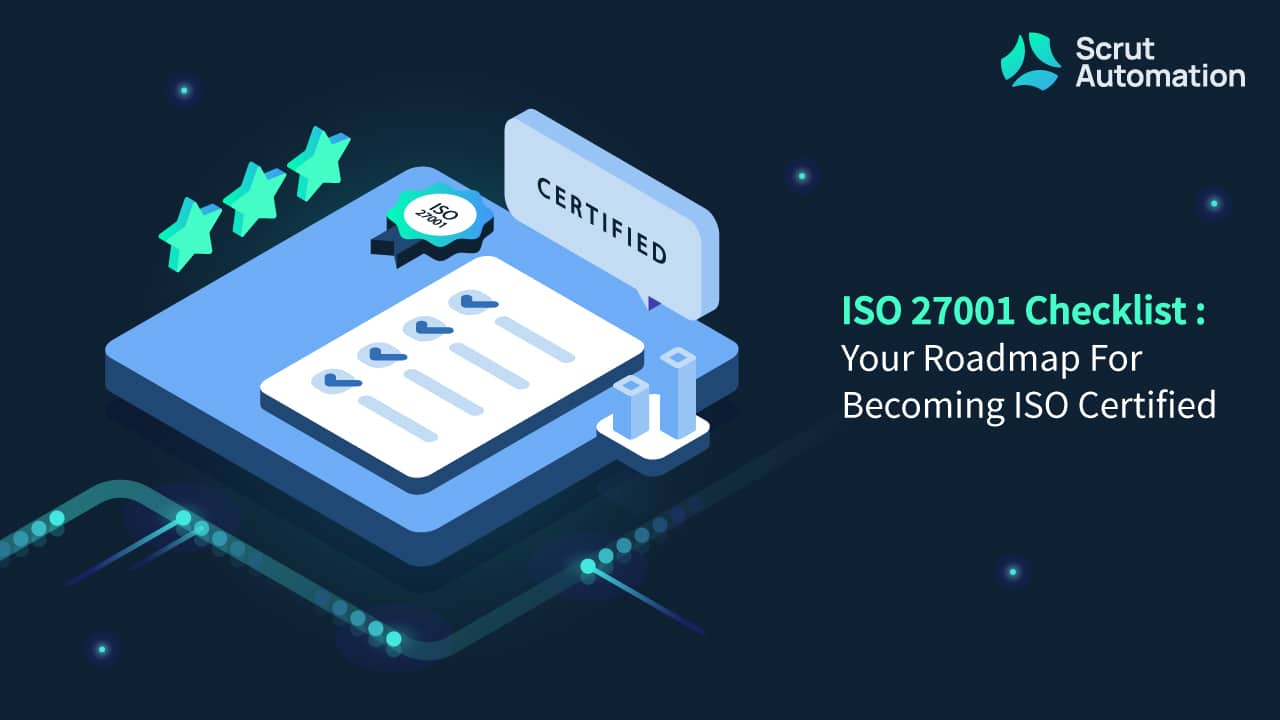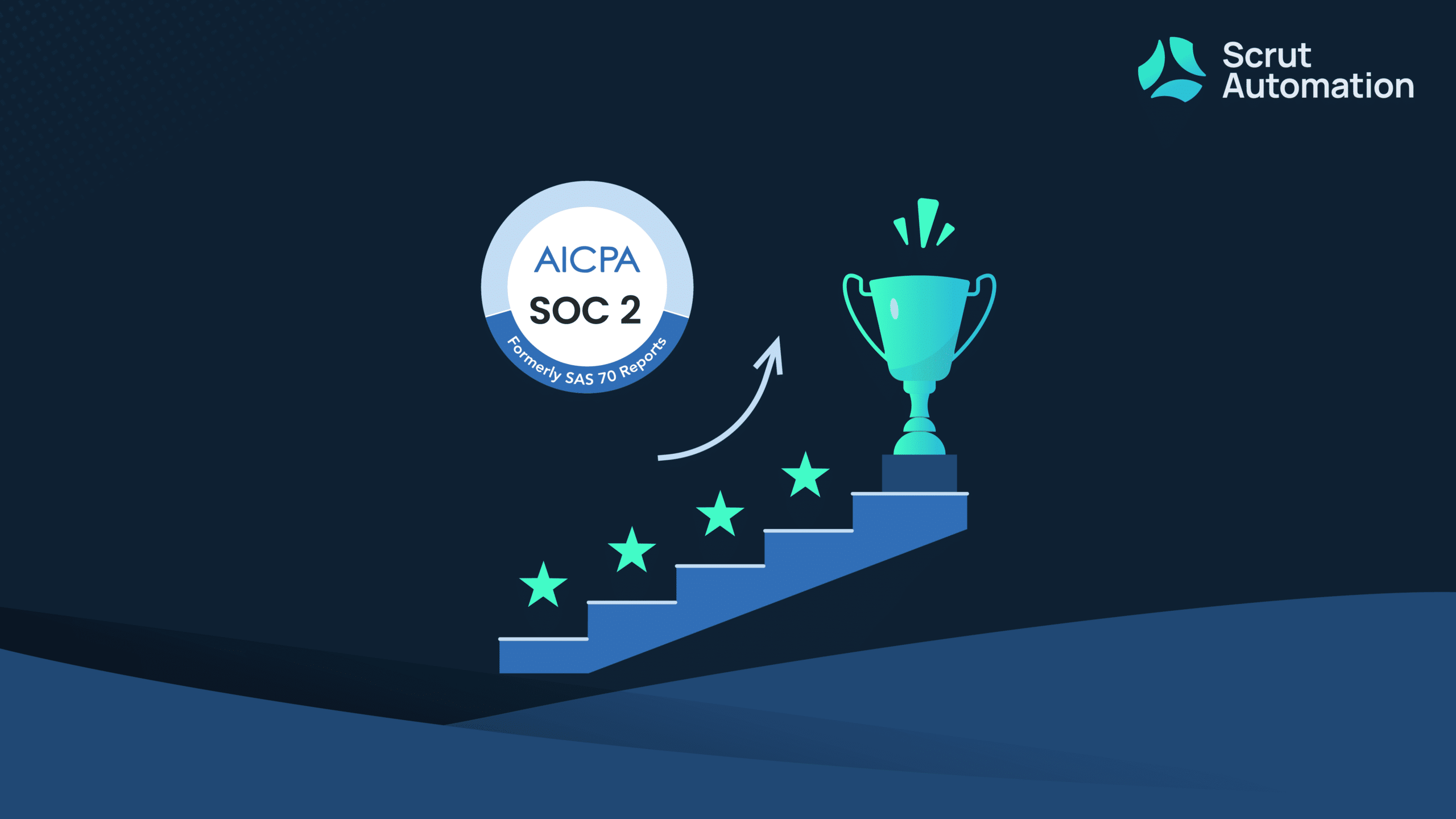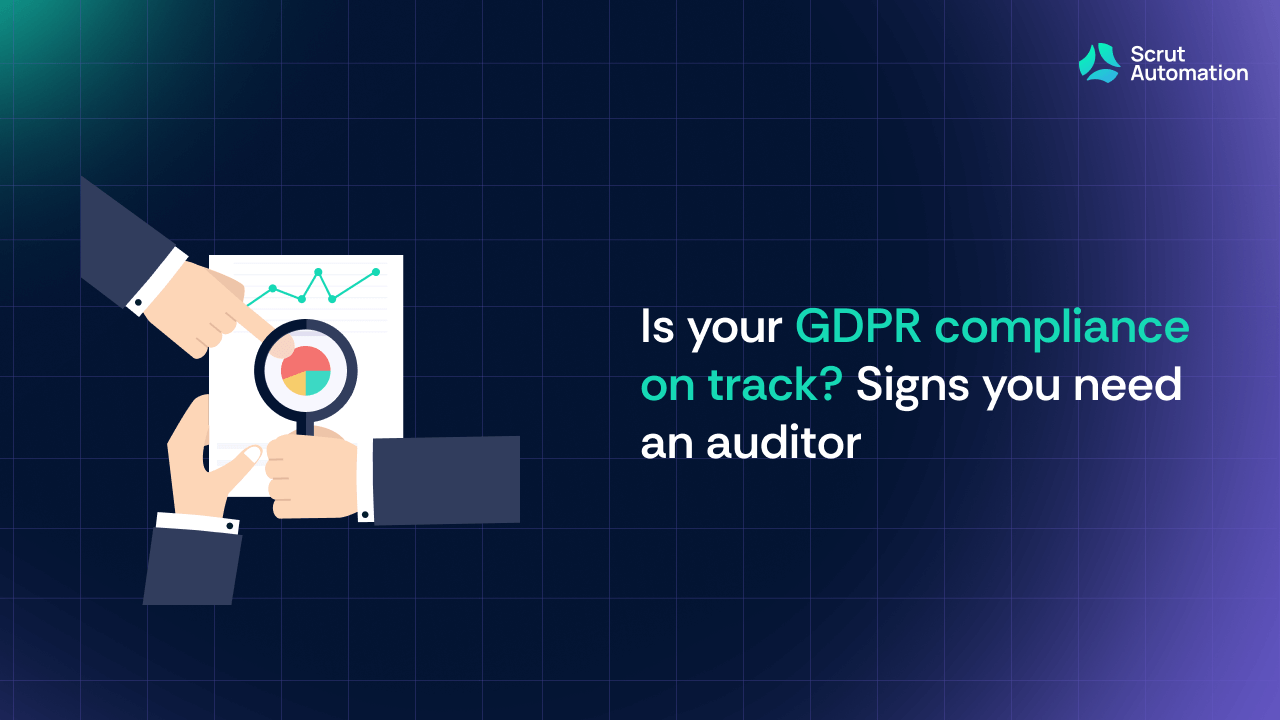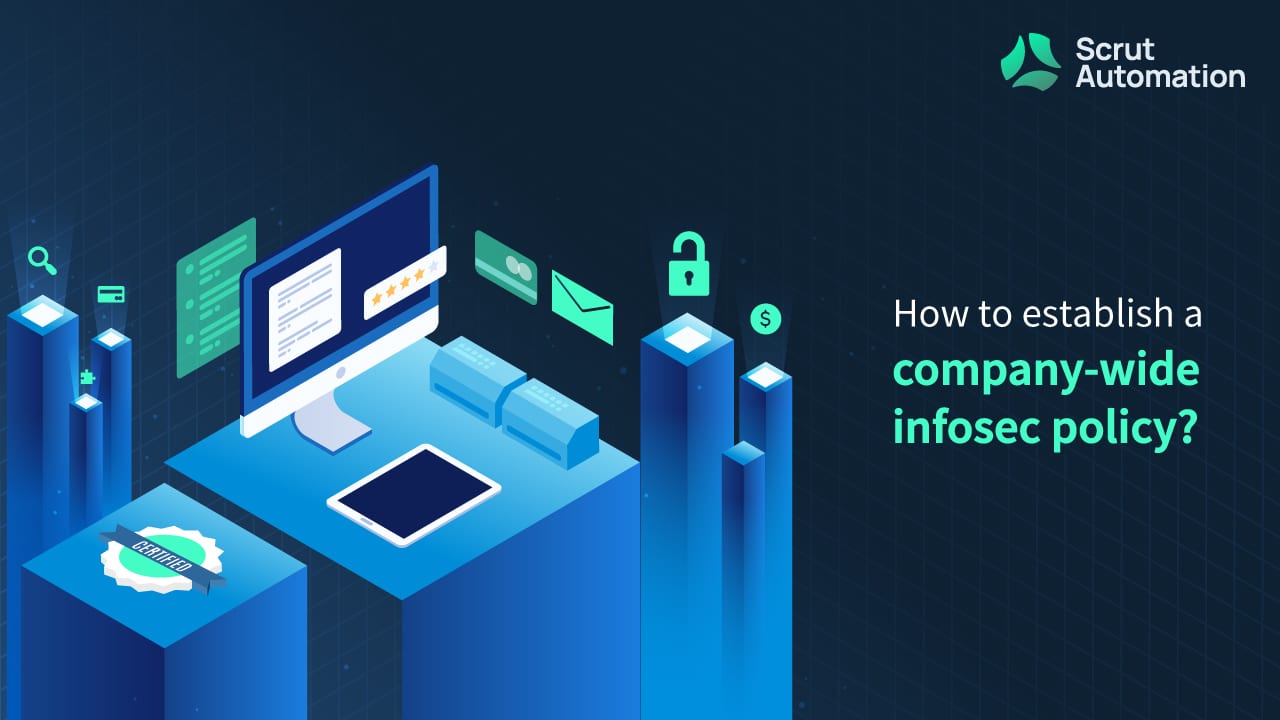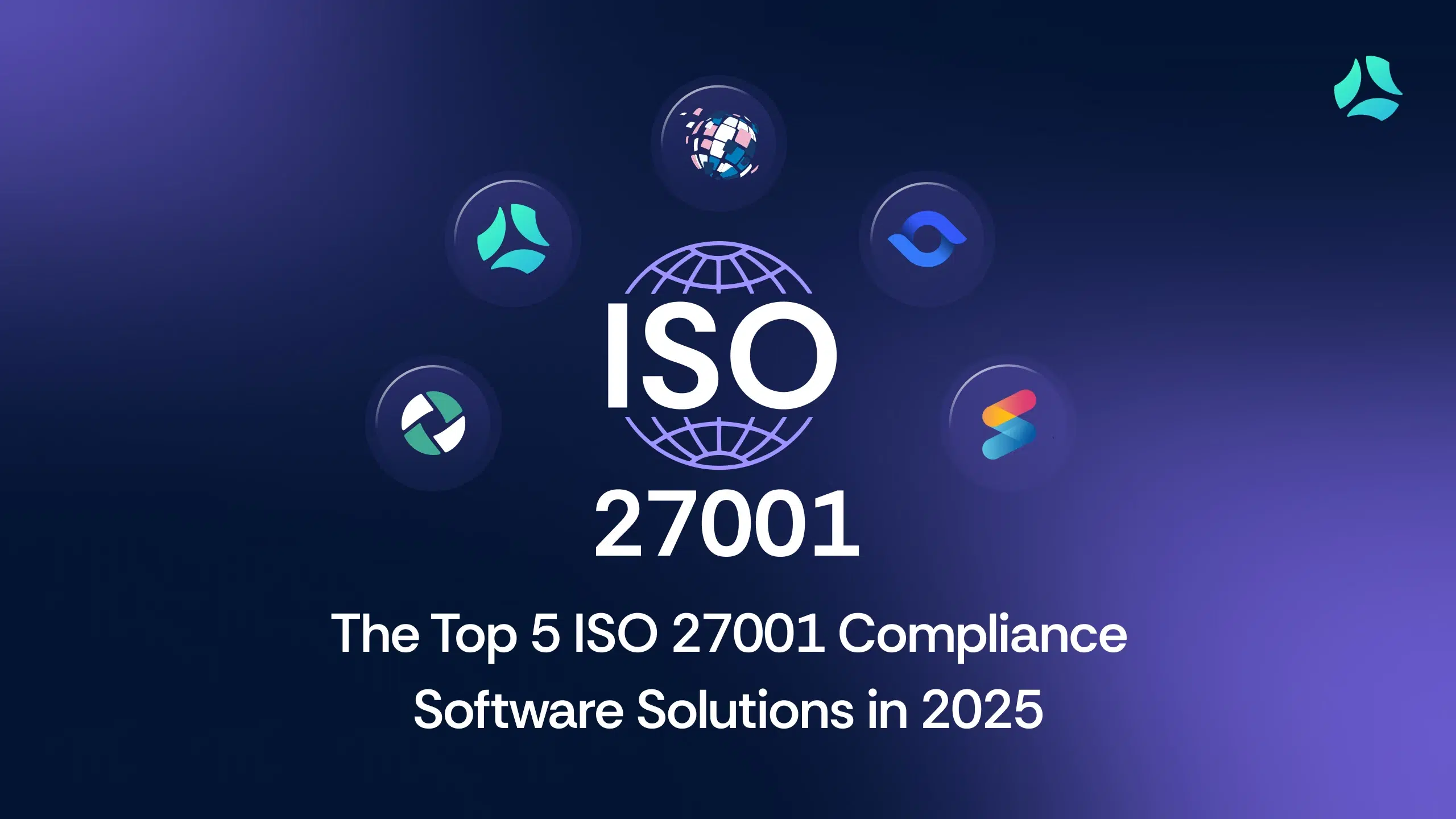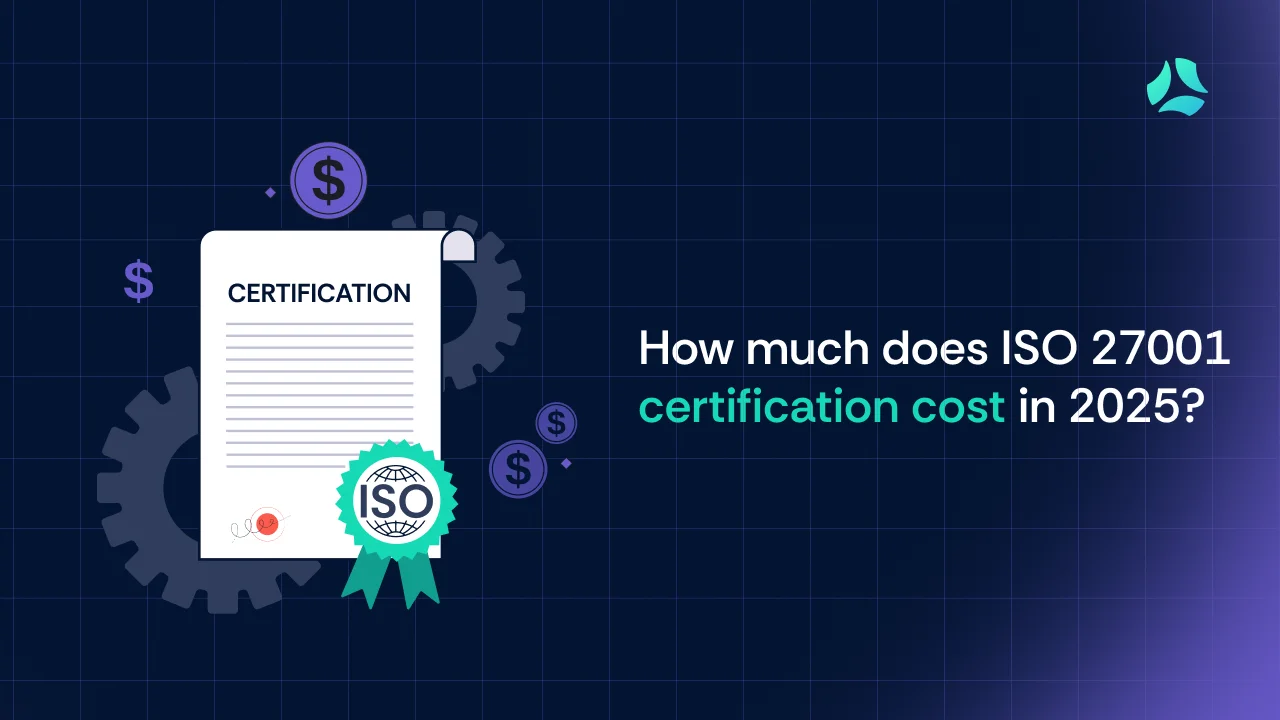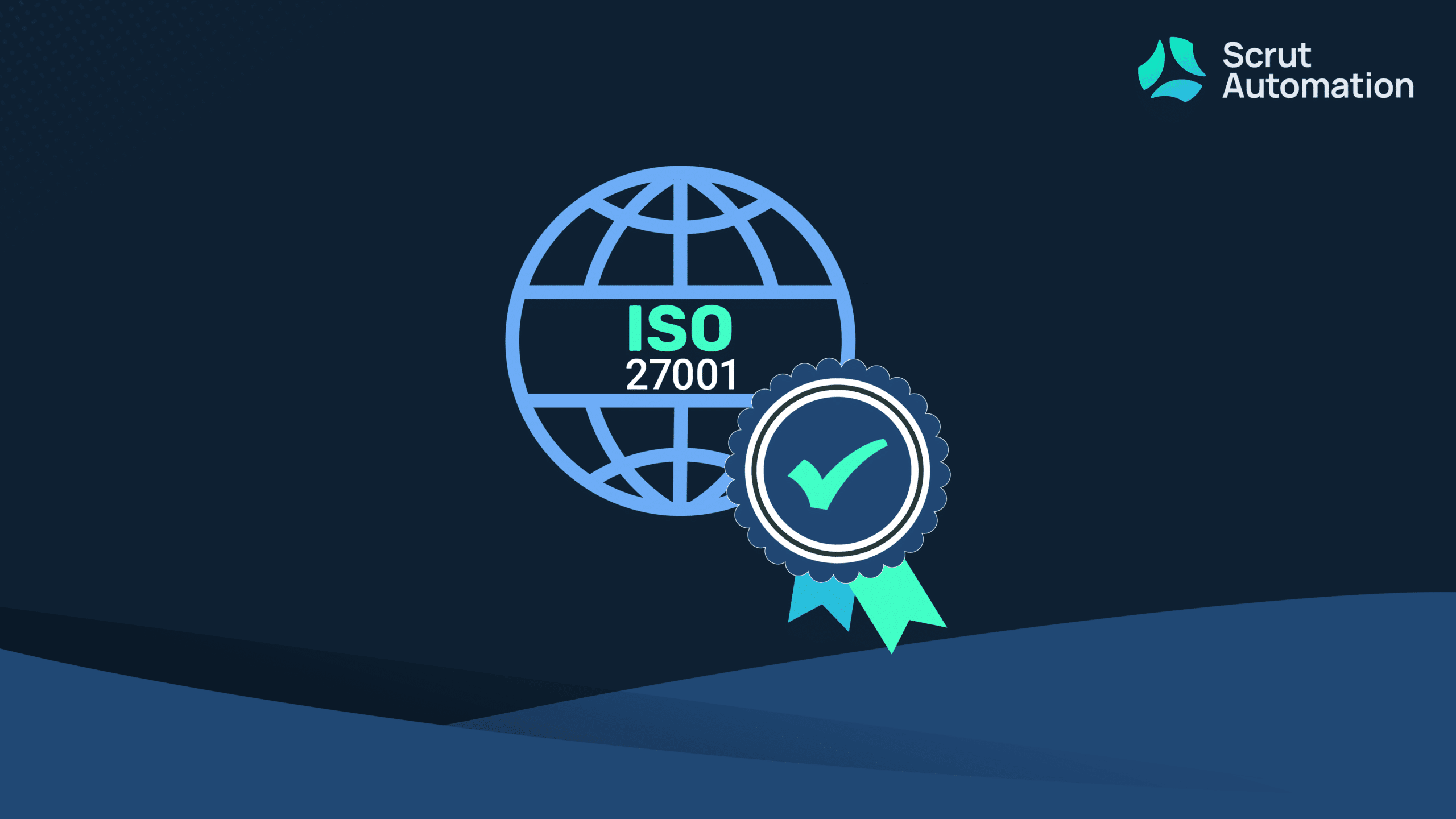The ISO certification increases customer trust by validating the credibility of an organization. Adroit Marketing research revealed that the ISO certification market is expected to grow at an approximate compound annual growth rate (CAGR) of 8.3% to reach a market value of $34.5 billion by 2028.
Business giants like Apple, Google, Verizon, Amazon, and Intel are certified by International Organization for Standardization (ISO) 27001. This means they are following all the rules described in the standard and are successfully audited by an outside agency.
if you want to begin your journey of ISO 27001 certification but are wondering what steps to take first, this article will come in handy. We have listed out a roadmap for you to become ISO certified.
What is ISO 27001 certification?
International Organization for Standardization is an independent non-government organization with a membership of 167 national standards bodies. ISO 27001 is one of the standards within the ISO family and covers information security management systems (ISMS) and their requirements.
Additionally, other standards in ISO/International Electrotechnical Commission (IEC) 27000 family describe the best practices in data protection and cyber resilience. Collectively, these standards are suitable for all sizes of organizations in every sector of business. They enable organizations to manage all their assets’ security, including financial information, intellectual property (IP), employee data, and information entrusted by third parties.
ISMS describes your organization’s policies to secure information and maintain privacy. It helps you to identify and deal with the threats around your digital data and assets. The ISMS helps you secure your data from cyber threats and protects your organization from disruption in a cyber attack.
What are the benefits of ISO 27001 certification?
First published in 2005, the ISO/IEC standard was revised in 2013 with technological improvements. Again in 2022, the standard was revised to fulfill the modern world requirements.
The following points show the benefits of ISO 27001 certification for your organization.
- Prevents avoidable costs on ineffective technologies used in security
- Reduces the chances of a cyber attack
- Avoids fines and penalties due to data breaches
- Improves the brand reputation of the organization
- Secures all forms of information, including digital, paper-based, and cloud-based
- Provides a centralized framework for securing information
- Responds faster to evolving cyber threats
- Protects the CIA triad – confidentiality, integrity, and availability of the information
Implementing ISO 27001:2022 standard
ISO 27001 is not a mandatory framework for organizations but a voluntary one. Basically, the organization gets ISO 27001 certification to employ best practices in security and win customer trust from the certification.
You must remember that ISO is not a certification body. It just provides the framework for the security of organizations. However, many external certification bodies provide certification.
ISO does have a Committee on Conformity Assessment (CASCO) that produces multiple standards related to the certification process. The certification bodies use the CASCO standards to provide certificates to organizations.
As you have multiple certification bodies to choose from, you must consider the following points before entering into an agreement with any one of them:
- Compare and contrast multiple certification bodies
- Verify whether the certification body follows CASCO standards
- Opt for accredited bodies to improve the trustworthiness
The two primary elements of ISO 27001 standards are Clauses 0-10 and Annex A controls. Clauses 0-10 outline the scope and necessary specifications for a certified ISMS, including all the paperwork, procedures, guidelines, and safety measures you must put together, develop, and implement to meet ISO 27001 compliance.
Annex-A includes 93 security controls applicable to information systems based on the result risk assessment.
Let’s understand Clauses 0-10 and Annex-A in some detail.
Clause 0-10
Clause 0: Introduction
The ISO 27001:2022 standard provides guidance and direction on how to manage an organization’s information system effectively, regardless of the size and industry, to reduce information security risks that can benefit the organization and its stakeholders, including suppliers, customers, and employees.
Clause 1: Process and process approach
This clause defines the terms used throughout the standard. We can discuss each term as and when required.
A process is defined as “a group of repeatable and interrelated activities performed to transform a series of inputs into defined outputs.”
While a process approach can be defined as the “management of a group of processes together as a system, where the interrelations between processes are identified, and the outputs of a previous process are treated as the inputs of the following one. This approach helps ensure the results of each individual process will add business value and contribute to achieving the final desired results.”
Clause 2: Process approach impact
Compliance can increase the organization’s cybersecurity but cannot guarantee security. There are just too many factors responsible for any organization’s cyber security, compliance being just one of them.
The process approach is imperative in efficient ISMS as it creates a link between requirements, policies, objectives, performance, and actions. An organization can view each step when it adopts the process approach in information and communication. It enables the organization to detect the pain point, if any, in the process easily.
Clause 3: The plan-do-check-act cycle
The plan-do-check-act (PDCA) cycle helps an organization deal with internal and external changes. Repetitively developing and implementing an action plan might prove harmful to the organization as it constantly changes. Although the PDCA method is accepted in managerial circles worldwide, it is particularly important for implementing the ISO 27002:2022 standard.
Plan
Planning of policies, objectives, targets, controls, processes, and procedures, as well as performing risk management, are included in this stage. The plan should be in line with the organization’s goals and objectives.
Do
Act on the plan you just formed.
Check
Evaluate the implementation of the plan and review it for effectiveness. List out the inaccuracies in the implementation process. Authorize the plan of action to remove inaccuracies.
Act
The organization takes authorized actions to stay on course and improve its information security posture.
Clause 4: Context of the organization
Under this clause, the management is required to determine the internal and external issues relevant to the business and the ISMS’s objectives.
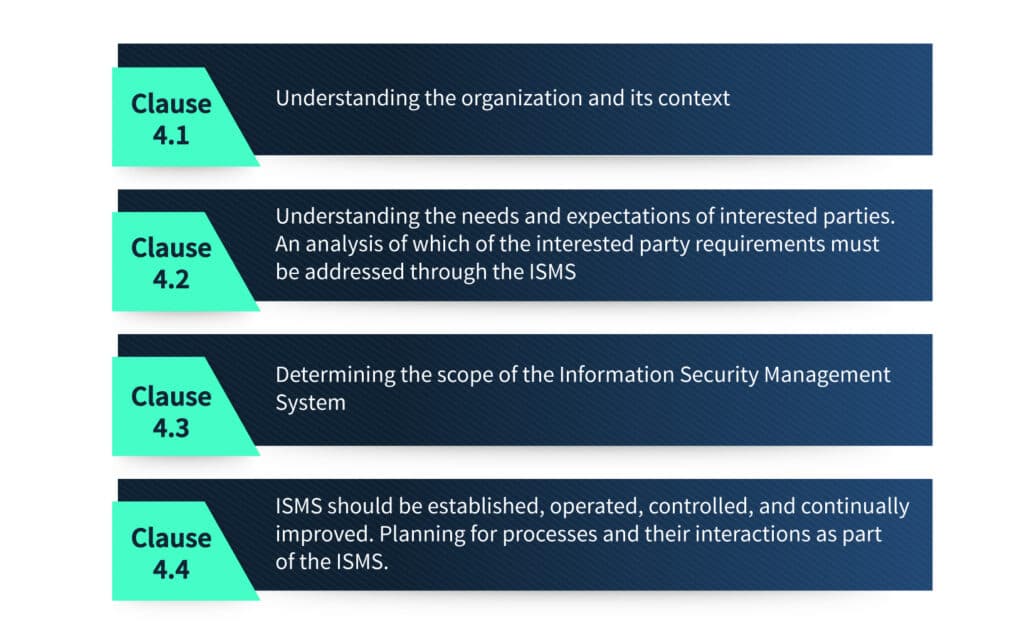
Clause 5: Leadership
This clause requires the organization to recognize the role of top management in implementing ISO 27001:2022 in the organization. They should ensure that the roles and responsibilities are delegated and communicated to the concerned parties effectively. The ISMS must meet the terms and conditions of the ISO 27001:2022 standard.
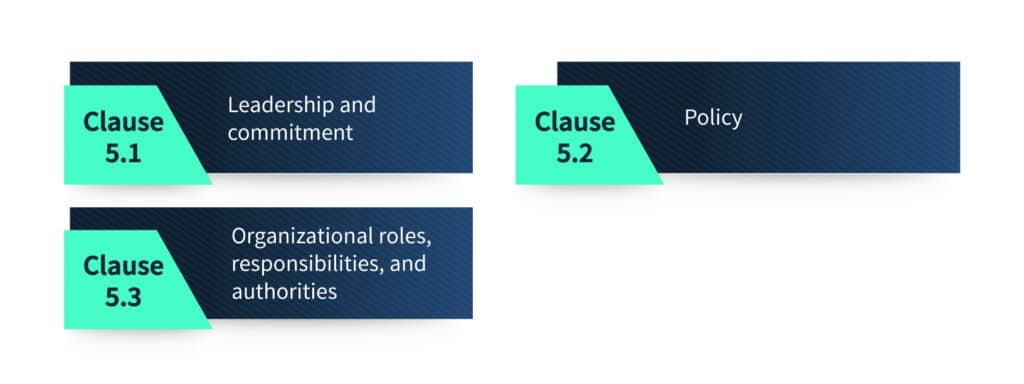
Clause 6: Planning
Clause 6 deals with the preventive actions taken by the organization by considering the risks and opportunities relevant to the organization’s context. The actions must be in accordance with their integration into the ISMS activities and how their effectiveness would be evaluated.
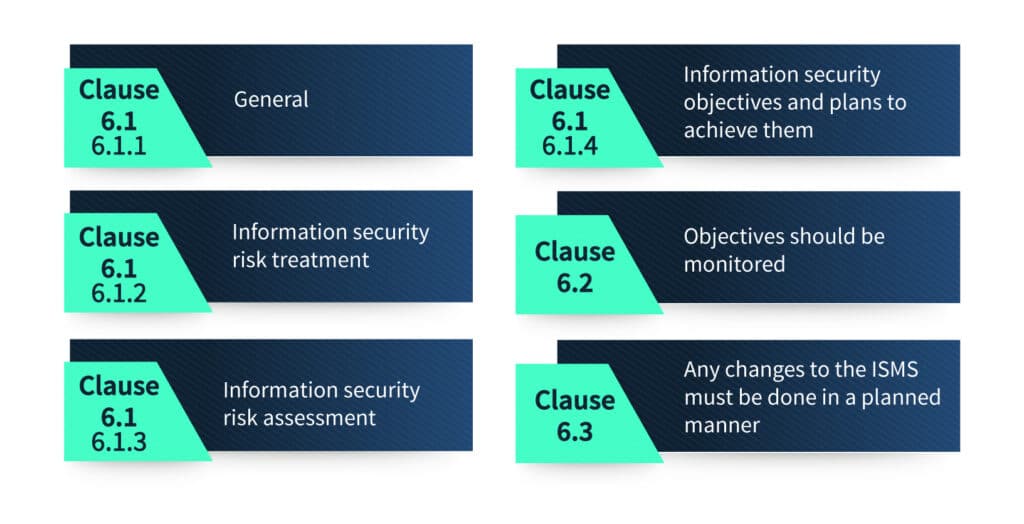
Clause 7: Support
If you want to implement ISO 27002:2022, you must have the support of human resources, financial, and educational resources. The standard describes the following:
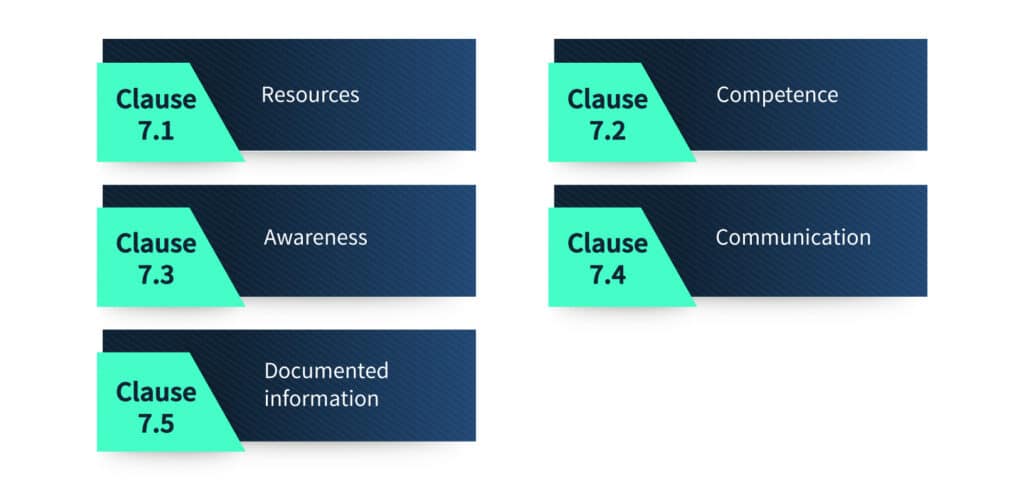
Clause 8: Operation
The ISMS must plan, implement, control its processes, and retain documents proving that the processes are being carried out per the plan. The Operation Clause of ISO 27001 defines the operation phase of the implementation process.
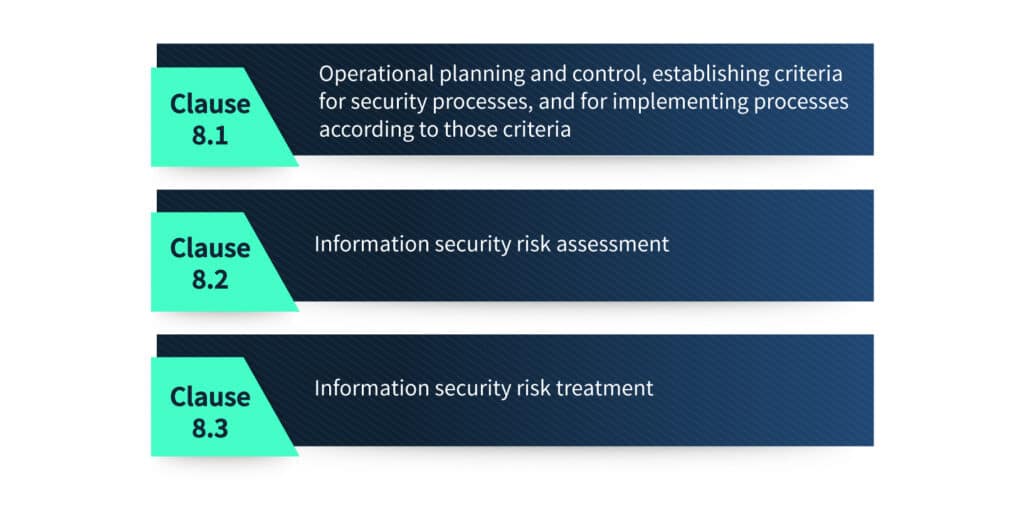
Clause 9: Performance evaluation
The effectiveness of the process and procedures should be evaluated in conjunction with the objectives of the organization’s ISMS.
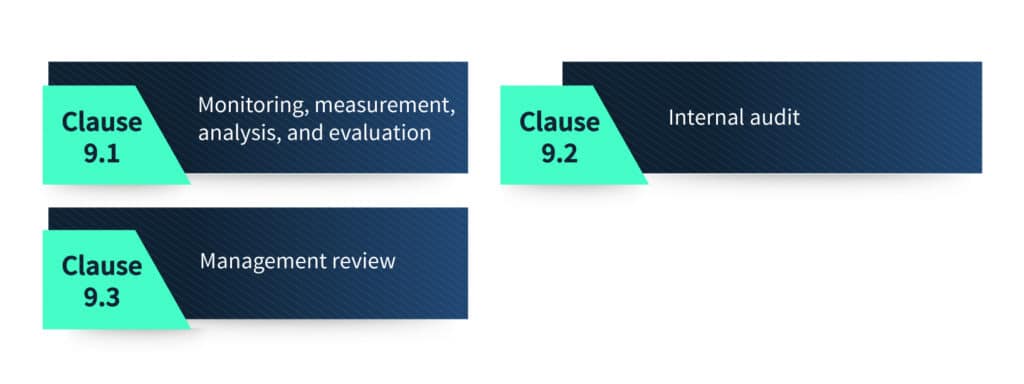
Clause 10: Improvement
If there is room for improvement in the ISMS, then it should be identified and implemented. This clause also includes the corrective actions taken if the plan fails.

Annex A: Reference control objectives and controls
There are 93 controls in Annex A divided into four groups. How you build your ISMS using these controls depends on the specifics of your organization. Your particular risks can guide you about which controls to include in your policy and which to leave out.
Annex A can be represented in the following figure:
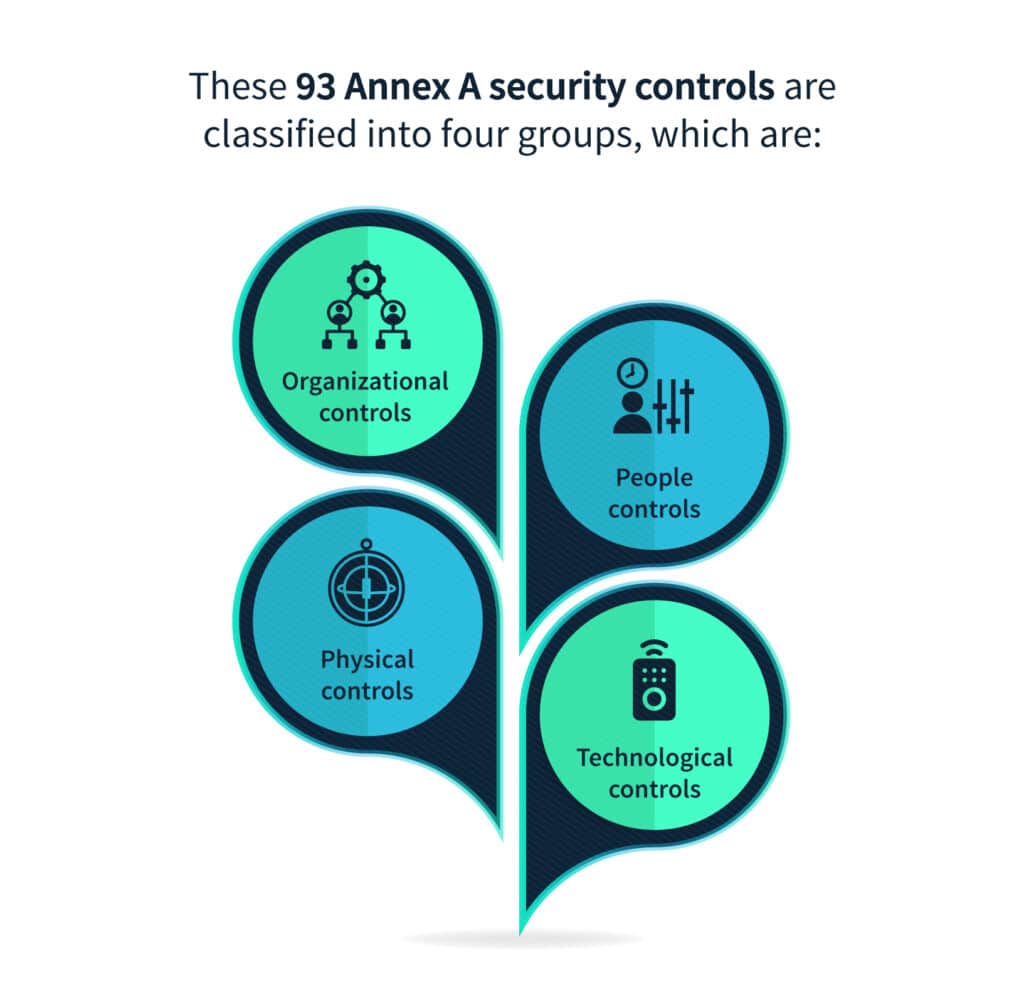
ISO:27001:2022 certification process
The journey of becoming ISO 27001 certified begins as soon as you start understanding the standard. All the clauses described in the standard, along with Annex-A, must be followed for hassle-free next steps.
After the processes, such as documentation, internal audits, managerial review, and resolving the issues of non-conformity, the organization should move forward with audits. The following points are important in the audit process.
Stage 1 audit: Documentation audit
The following documents are mandatory for the successful completion of this stage of the audit:
- ISMS policies and objectives
- Statement of Applicability
- Documented scope
- Description of risk assessment methodology
- Risk assessment report
- Risk treatment plan
- Procedure for document control
- Corrective and preventive measures
- At least one internal audit report
- At least one managerial review
Stage 2 audit: Main audit
In this stage of the audit, the auditor will ensure that the ISMS has truly developed in practice and is not just on paper. The auditor will sift through your records, interview the employees, and observe the organization’s day-to-day operations to verify whether it follows ISMS effectively. If everything is according to the documents submitted, the auditor will issue the ISO 27001 certificate.
But what if the auditor finds issues with the implementation? Well, they will notify the organization and give a deadline by which the non-conformity should be resolved. The organization removes the cause of non-conformity to meet the auditor’s expectations and notifies the same after a resolution. If the auditor finds the resolution satisfactory, they will issue the ISO 27001 certification.
Stage 3 audit: Surveillance audit
The validity period of the ISO 27001:2022 certification is three years. During the certificate validity period, the certification body will conduct surveillance audits to verify the maintenance of ISMS. Surveillance audits are carried out a minimum of once every year. They are very similar to main audits but take little time.
The ISO 27001:2022 certificate expires at the end of three years from the date of initial certification. The recertification process is the same as applying for a new certificate.
Critical pain points of ISO 27001 audit
The ISO 27001:2022 certification process is long and takes months to complete depending on the size and complexity of the organization. However, if you want the process to move smoothly, you must concentrate on the following pain points.
Documents
Documentation is imperative to the successful completion of the ISO 27001 audit. When you submit the documents to the auditor in the first stage, you must ensure that the documents are complete and according to the demands. A complete set of documents can reduce the time taken for certification.
Evidence
Evidence of implementation is crucial for the success of the second stage of the audit. Do your policies match your actions? If the answer is yes, which is usually the case, the auditor will need evidence to verify it.
Interviews
The third pain point is the knowledge and training imparted to the employees. Despite complete documentation and relevant evidence, if the employees are not aware of the policies, the certification will lose its value. Therefore, the auditor can and will interview the employees to verify their knowledge about their responsibilities in compliance with ISMS.
How can Scrut help you with ISO 27001 certification?
Scrut can help you secure your ISO 27001 certification easily and without any issues. Let’s look at the specifics of Scrut’s involvement.
Strengthen your ISMS
This feature helps you to identify the gaps in your compliance. Through a single platform, it helps you manage every ISMS function, including cloud risk assessments, control reviews, employee policy attestations, and vendor risk.
Create ISMS policies instantly
If you do not want to build your own ISMS policies, Scrut has over 50 pre-built policies to choose from. Moreover, if you want to build your own policies, Scrut has an in-built editor to help you with it. To perfect your policies, you can ask help of a in-house ISO 27001 expert to vet them.
Build employees as compliance champions
Employees are at the crux of policy implementation, so untrained employees can prove to be a liability to the organization’s efforts to achieve ISO 27001 certification. Scrut helps you track the progress of your employee training. It helps you conduct periodic tests, and anti-phishing campaigns and ensure policy attestations.
Monitor controls, continuously
It is easier to manage gaps in compliance procedures as and when they occur. Scrut gives you real-time view of the gaps. It also gives you automated, configurable alerts and notifications for maintaining daily compliance.
Automate evidence collection
The second stage of audit requires the organization to submit evidence to the auditors. Scrut helps you to collect evidence automatically from above 70 commonly used integrated applications. Scrut automates >65% of the evidence collection across your application and infrastructure landscape against pre-mapped controls.
Accelerate your ISO 27001 audit
Did you know you can invite your auditor to the Scrut automation platform for collaboration? You can accelerate your audit by responding to requests, sharing evidence artifacts, and monitoring audit status directly on the platform.
Effortlessly manage evidence of compliance
The organization’s stakeholders, including customers and investors, are interested in the organization’s security and compliance postures. You can showcase your certifications on the Scrut platform to help build trust.
Access to ISO 27001 compliance experts
Understanding and following ISO 27001:2022 is not an easy task. However, Scrut is not just a platform but a complete compliance solution with expert backing it. You can get access to experts such as consultants and auditors to seek guidance.
Conclusion
ISO 27001:2022 is standard to help you develop and implement an effective and secure ISMS. Introduced in 2005, it has gone through two reviews – 2013 and 2022. It describes the steps to be taken by an organization for successful audits, which can ultimately earn you ISO certification. We saw all the clauses and annexures of the ISO 27001 standard. We also described the audit requirements and the audit process for acquiring the certification, as well as how Scrut can help you with it.
Being ISO 27001 certified can take you a long way to increase your business. Log in to the Scrut website for more information.
FAQs
ISO 27001 is a standard for international information security management (ISMS), while ISO 27002 is a supporting standard on how an organization can implement security standards.
The main benefits of ISO 27001 certification are increased trust of stakeholders, reduction in chances of cyber attacks, and faster response to cyber threats.
Some of the other compliance standards are HIPAA, PCI/DSS, SOX, and FISMA.

Megha Thakkar has been weaving words and wrangling technical jargon since 2018. With a knack for simplifying cybersecurity, compliance, AI management systems, and regulatory frameworks, she makes the complex sound refreshingly clear. When she’s not crafting content, Megha is busy baking, embroidering, reading, or coaxing her plants to stay alive—because, much like her writing, her garden thrives on patience. Family always comes first in her world, keeping her grounded and inspired.
